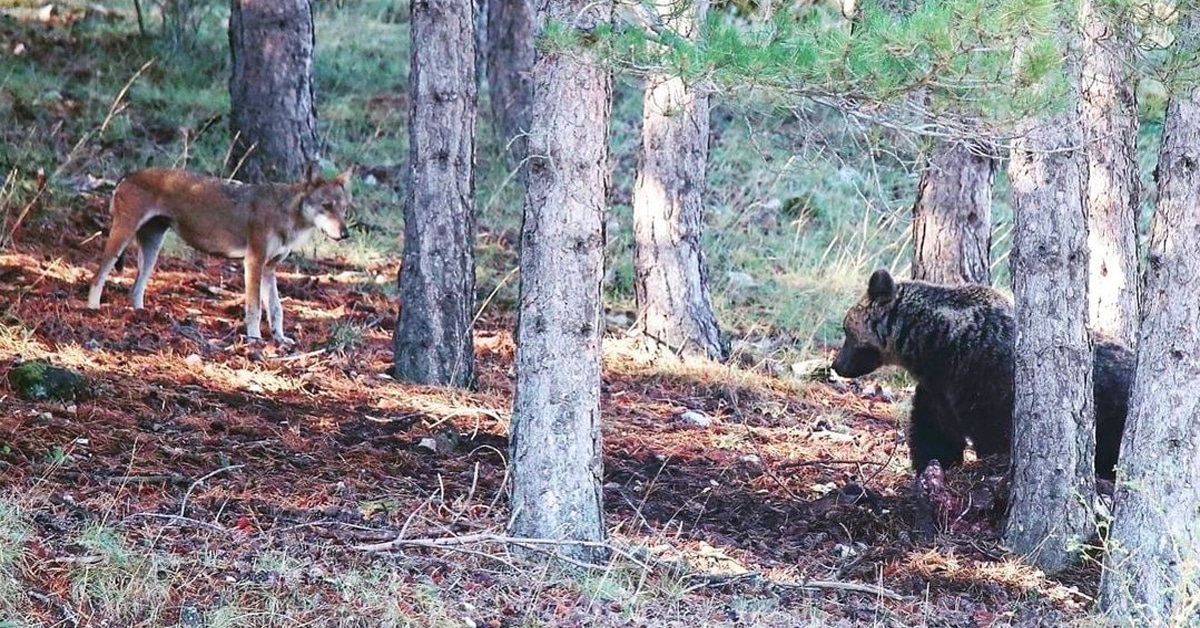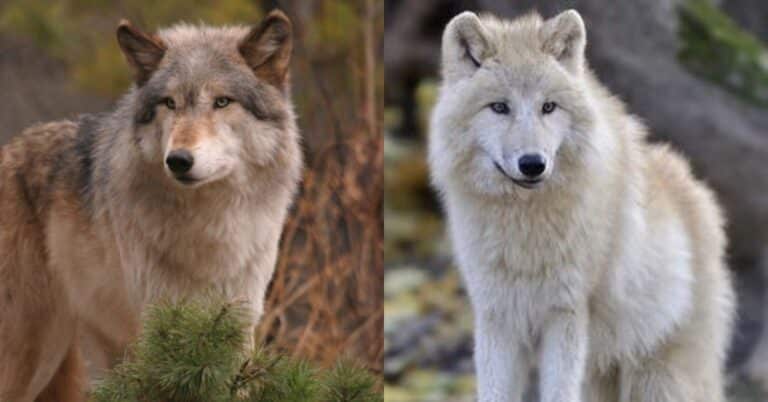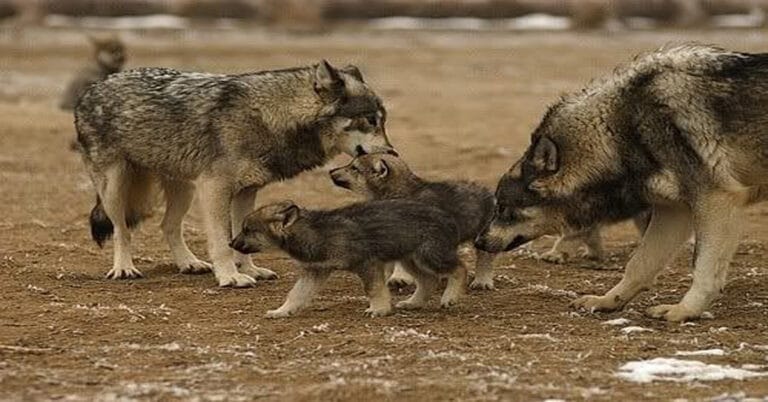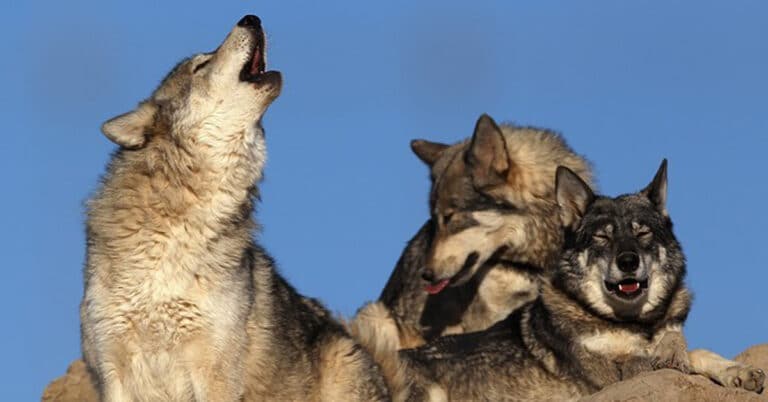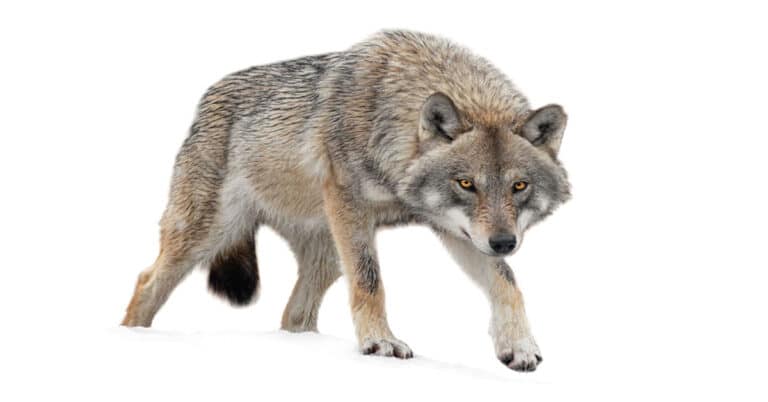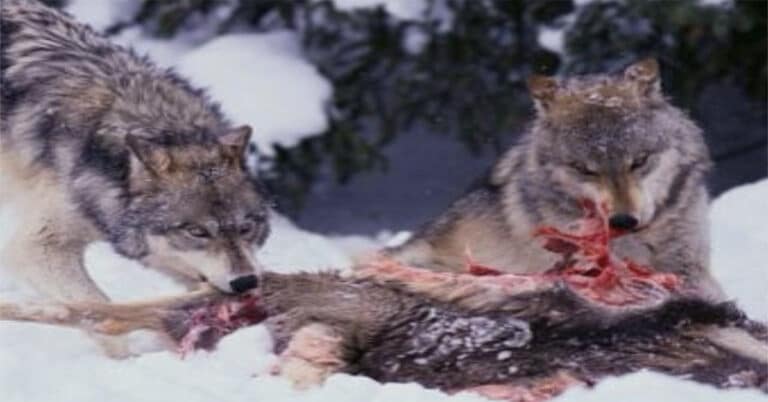What Eat Wolves?
It’s challenging to think of a creature that would hunt or kill a wolf. Wolves are apex predators, and they play an essential role in preserving the balance of the environment. What eats wolves? Are there animals that can hunt them down? After all, they are considered to be in the top position of the food chain, but some creatures have a higher position.
Well, even though wolves are strong predators, other animals still feed on them. There is a list of several predators in the outdoors what eat wolves, lions, and bears, which are mostly among them. It depends on the situation whether wolves can successfully kill some of these species or not.
So, there are creatures that hunt wolves down? Yes, believe it or not, even wolves can be eaten. In this article, we’ll discuss what eat wolves and when or why they do it.
What Kills Wolves in the Wild?
Wolves can die for a variety of reasons, including attacks from other predators like coyotes and bears, illnesses, accidents, or even because of the prey they hunt. Many of these creatures are aware of the dangers, so they don’t always interact aggressively.
For wolves, illnesses are a frequent cause of mortality. Wolf pups are affected most by the disease. Diseases from both people and animals can infect them. Although rabies is arguably the most well-known illness to harm wolves, numerous others can also be fatal.
Many wolves also perish in accidents. Because they are not the most cautious creatures, wolves can easily be injured or even killed in mishaps. While hunting, they frequently get injuries, although deaths are less common.
What Eat Wolves?
Have you ever wondered what eat wolves? Few animals actively hunt down wolves for food, but the list of these animals isn’t long. Some of them include bears, tigers, mountain lions, scavengers, humans, and, believe it or not, even other wolves!
It should be highlighted that many of these wolf predators do not actively pursue wolves for food, even though they are all thought of as apex predators. Instead, they often only kill wolves during territorial disputes. But wolves do have natural predators, despite everything.
Humans
Well, you might already know that most humans don’t love wolves because of the danger they might cause to us. Humans have been significant wolf hunters over the years. The question – What eat wolves – may not be irrelevant even for humans. You may not think of it as food, but in some societies, wolves are still killed largely for their pelts, although wolf meat is still consumed in several countries throughout the world.
Furthermore, wolves were nearly driven to extinction but have recently gained protection and are repopulating. Despite this recent shift, the dominance of humans over wolves is difficult to ignore given our use of technology and sophisticated hunting techniques.
Bears
Depending on the species, bears range in weight from 100 to 1000 pounds, making them enormous apex predators and stronger than wolves. They can easily defeat a lone wolf as a result of this.
But, because wolves usually hunt in groups, a single bear would have to engage many wolves at once, and that might be a little difficult for them. They don’t aggressively chase one another because doing so would still be harmful to both sides, especially if the young species are involved.
As both species are territorial, a wolf or bear may kill the other if they enter their space. A bear may consume a dead wolf in this situation. So, a bear is another answer to the question “what eat wolves”.
Tigers
The biggest predators in the cat family are Siberian tigers. They can reach nearly nine feet in length from head to tail and weigh more than 475 pounds. They have a reddish-orange coat that has black stripes running down the back and legs.
The main prey of these tigers is deer, although they will also kill elk, wild boar, and even baby bears. Although it is uncommon, Siberian tigers have been known to kill wolves. In several regions of the world, wolves and tigers coexist in the same territory, which might create a little tension between the species. According to studies, wolf populations tend to decline in areas where tigers are present as a result of the tigers’ hunting activities.
They both resided in the same place, although at various points in time and fighting over territory most probably won’t end peacefully. But as time went on, surprisingly, Siberian tigers began to disappear or abandon the region, and wolves began to replace them. Although conflicts between these two are often avoided, they still occasionally happen because of territorial issues.
Mountain Lions
Mountain lions have been known to occasionally kill wolves. These predators, like bears, are solitary hunters, which makes them less effective against wolves. However, because they are carnivores, mountain lions may kill wolves one-on-one if they are in the same hunting territory. This fight for leadership in the area can be very sensitive for most of these predators, including mountain lions.
Wolves
It’s probably strange to know that the answer to – what eat wolves – can be wolves themselves. However, contrary to popular belief, wolves are one of the wolves’ main predators. Violence between wolves can occur for two reasons. First of all, there is a considerable possibility that the encroaching pack will kill and consume the wolf if it attempts to invade its territory.
The second reason is that wolves within the same pack are capable of killing one another. Even though wolf packs are extremely close-knit, battles can nevertheless happen and lead to the death of one or more wolves. During a severe winter when food is exceedingly limited, they could also devour one another. But usually, they don’t eat wolves until they’re already dead.
Scavengers
Other scavengers also hunt wolves. Bears, vultures, coyotes, and eagles are some scavengers that may be the answer to what eat wolves. Scavengers won’t attack a healthy wolf, but they could feed on the frail and injured ones. For example, vultures are known to circle prey that is about to die to get their food.
Wolves and scavengers are not merely rivals. Living close to wolves is advantageous for scavengers since they frequently leave meals behind. In this way, foxes, ravens, and other scavenging animals may easily get food.
Wolves aren’t often preyed upon by scavengers, although they do consume them. Vultures, hyenas, and a range of tiny carnivorous creatures are some of the most common scavengers.
Unless a wolf has been seriously injured, there are almost no occasions on which these scavengers approach one before it is dead. Keep in mind that scavengers might differ by locale.
Coyotes
Wolf and coyote habitats are frequently shared. Because they are opportunistic predators, coyotes will pounce on any available prey. They are also territorial creatures who frequently engage in food-source competition with other predators. That’s why coyotes occasionally kill and hunt wolves.
Even though coyotes are smaller than wolves on average, they have been observed to feed on wolf pups. They could also kill wolves that are weak or injured. Coyotes and wolves have a complicated relationship; while coyotes frequently consume wolf pups, adult wolves occasionally kill coyotes to defend their territory.
How Do Wolves Defend Themselves?
All these animals may hunt down wolves, but it doesn’t happen that frequently since wolves are mainly moving as groups and they can protect themselves effectively. What is their method? What distinguishes wolves from the majority, if not all, of the other creatures in the animal kingdom?
There are two main reasons why wolves still stay at the top of the food chain and are still considered one of the strongest predators:
- Wolves live in packs, which have an average size of six wolves. Wolves instantly have a huge edge over most other animals who hunt alone because of this. A pack of wolves can swiftly neutralize a possible threat in addition to defending one another. While certain animals may overwhelm a lone wolf, it is extremely hard to defeat a pack of wolves.
- Another important reason is physical characteristics – wolves have the ideal predator’s physique. Their outstanding senses of smell, hearing, and sight, as well as unmatched agility, help them to hunt their prey. Therefore, they have the option of instantly fleeing or fatally wounding a possible predator.
Bottom Line – What Eat Wolves?
So, what eat wolves? As it turned out, bears, tigers, lions, coyotes, various scavengers, people, and even wolves themselves are among the species that prey on wolves. Even though wolves aren’t widely eaten by humans, we are still the biggest predators that kill them. Therefore, a human is a wolf’s worst enemy.
However, wolves may attack many other animals, including foxes, coyotes, dogs, and even other wolves, which they perceive as rivals in their area because they will not accept another leader in their territory.
Interestingly, even stronger predators than wolves can be hunted down and killed by the stronger ones. That’s how the food chain works and maintains the balance of the week and is strong in nature.

Nato is a content writer and researcher with a background in psychology who’s eager to explore the wonders of nature. As a travel enthusiast and animal lover, she hopes to inspire others to discover and cherish the beauty and importance of the natural world.

